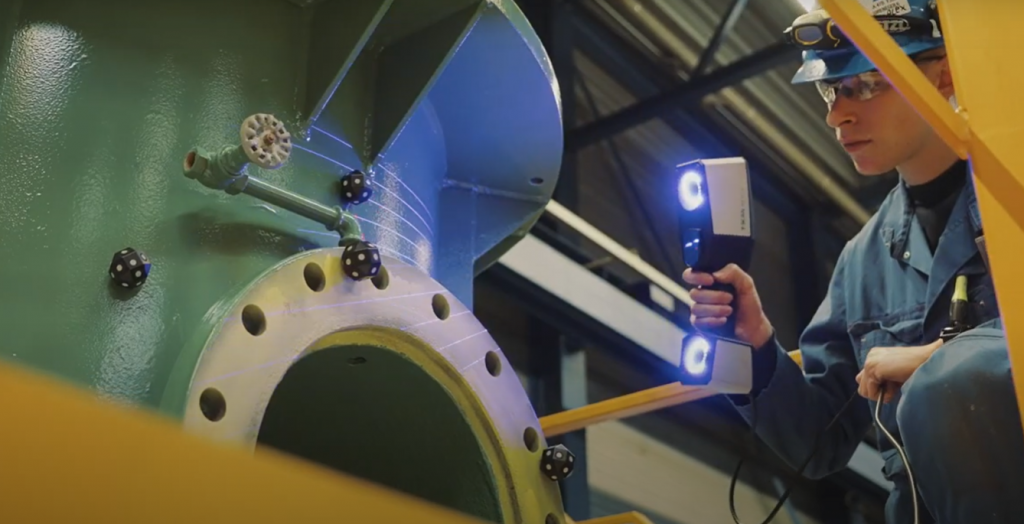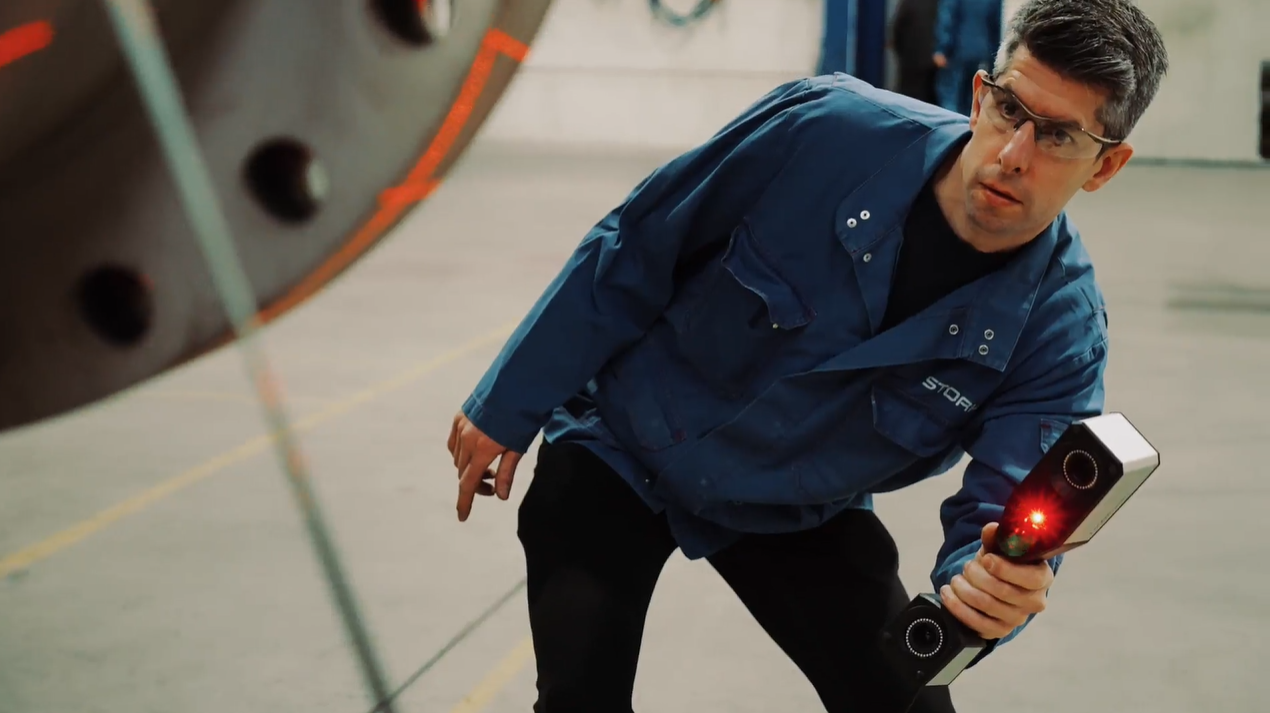The work with ZEISS T-SCAN hawk 2 at Stork company
Since 1868 the company, based in the Netherlands, is responsible for maintaining, repairing and overhauling parts of their customers. For the revision of various components from the most different industries they use 3D scanning solutions by ZEISS. There are two ways optical 3D metrology supports their approach:
1
Checking the defect objects results in the overhaul or replacement of certain components with spare parts, delivered by the customer itself. The quality control process is performed with 3D scanning and the portable, hand-held system ZEISS T-SCAN hawk 2. Faulty parts can be analyzed with an accurate 3D mesh and various evaluation possibilities in the inspection software of the ZEISS Quality Suite.
2
Another option is the reverse engineering process. With the help of 3D scanning, a 3D model of the part can be created which later can be reverse engineered. This alternative is also supported by the new laser scanner and the corresponding software solution.
After having checked the quality and overhauling, the components are being assembled again and brought back to operation. This happens fast and intuitively since only one tool is needed for their diverse inspection tasks.
The vision: digital warehousing for advanced customer support
The digital collection of scanned parts and components becomes more and more important for the company. It makes Stork more flexible and furthermore accelerates the MRO processes.
What is digital warehousing and how does 3D scanning help?
Digital warehousing involves using digital technologies to store, manage, and analyze large amounts of data. In this approach, data is stored in a centralized location, making it easily accessible, processed, and shared by authorized users, no matter where they are.
One of the main advantages of digital warehousing is that it allows organizations to leverage their data assets effectively. By integrating data from different sources and formats into a single database, digital warehousing enables businesses to gain a comprehensive view of their operations, customers, and market trends. With this holistic view, organizations can make more informed decisions, improve their processes, and identify new business opportunities.
Digital warehousing also supports real-time analytics and reporting. With data processing and analysis in real-time, businesses can respond quickly to changes in the market, customer preferences, and other variables. This allows them to make necessary adjustments promptly and capitalize on emerging opportunities.
3D scanning is an advanced technology that can help organizations realize the benefits of digital warehousing. With 3D scanning, businesses can create highly accurate digital models of physical objects, spaces, and environments. These models can be integrated into the digital warehouse, providing rich and detailed information about the physical world in digital form.
By incorporating 3D scanning into their digital warehousing strategy, businesses can gain greater visibility into their physical assets and spaces. This can be particularly valuable for companies in industries like construction, architecture, and engineering, where detailed and accurate representations of physical spaces are essential for successful projects. With 3D scanning, businesses can improve project planning, design, and execution, reduce errors and waste, and ultimately achieve better outcomes.
New Maker Story
Watch the whole maker story here and get exclusive insights into the work in MRO and future plans regarding digital warehousing at the company Stork.
Stork: MRO with portable 3D scanner
MRO processes with the portable ZEISS T-SCAN hawk 2 are the way to go for the company Stork.The flexibility of the scanner is ideal for the indiviudal quality control and reverse engineering tasks of their customers. Have a look at the daily work at Stork company in our new Maker Story.
Multi-tasker ZEISS
T-SCAN hawk 2
For more information check our website.

